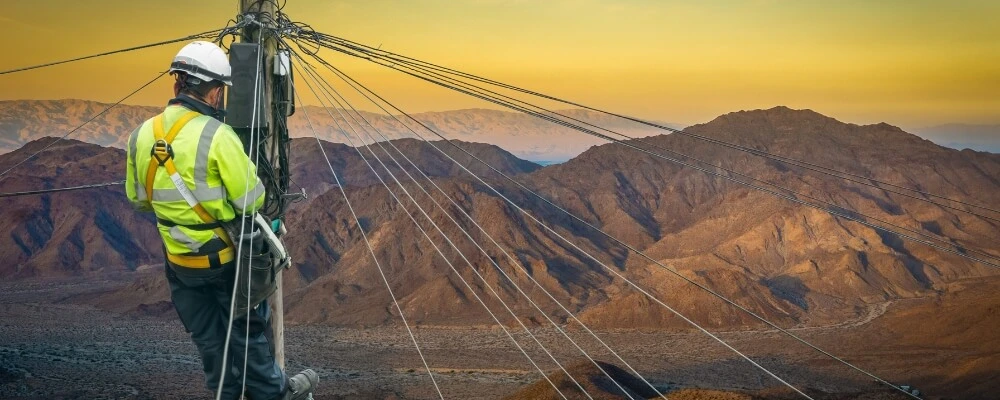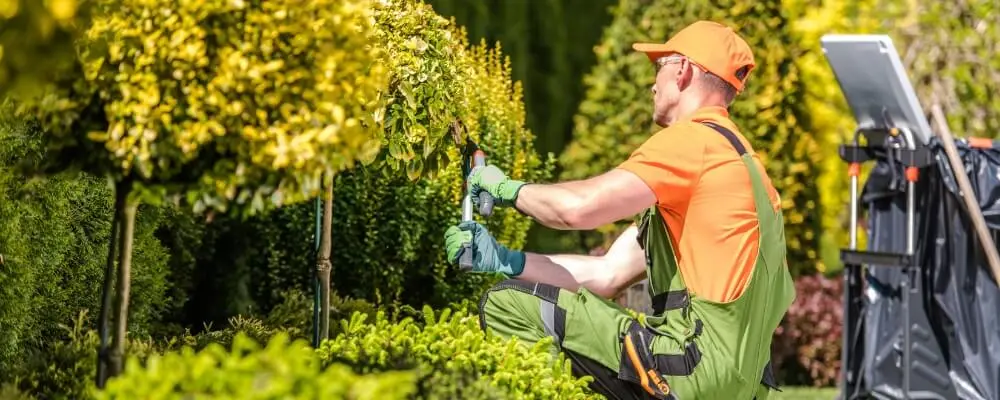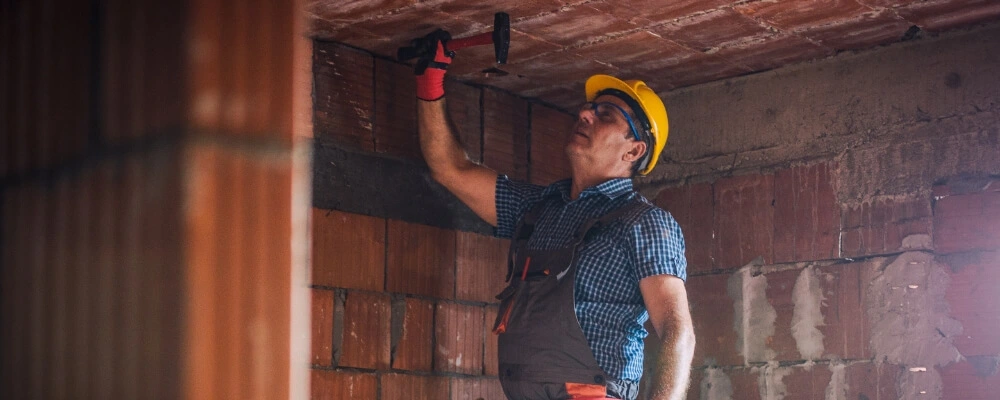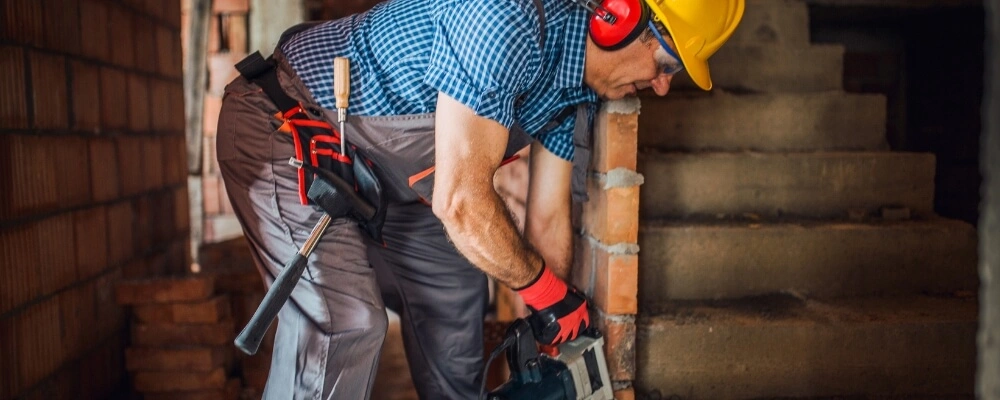In today’s fast-paced and ever-evolving industrial landscape, many professionals operate in solitary environments, away from the traditional safety net of a team. Whether braving remote job sites, conducting fieldwork or navigating through isolated areas, these lone workers face unique challenges that demand innovative safety solutions.
Recognizing their crucial role and the distinctive risks they encounter, we’ve curated a list of the top 10 lone worker safety devices that every employer should consider. These tools ensure that workers are shielded from potential hazards and foster a culture of safety, preparedness, and responsibility. Dive in as we unravel the best devices to ensure your lone workers remain connected, protected, and safe, no matter where their duties take them.
What are Lone Worker Safety Devices?
Lone worker safety devices are tools or systems designed to enhance the safety and security of employees who work alone, without direct supervision, or in remote areas where immediate help is unavailable. These devices ensure that, in the event of an emergency, danger, or health issue, the worker can communicate their situation, and appropriate assistance or intervention can be provided. They act as a lifeline, connecting the lone worker to monitoring systems, emergency services, or their employer, even in areas with limited connectivity or challenging environments.
The primary goal of these devices is to provide real-time communication, monitoring, and timely responses to any threats or dangers that the lone worker might face, ensuring their well-being and safety at all times.

Benefits Of Lone Worker Safety Devices
Lone worker safety devices offer a myriad of benefits, both for the individual workers and their employers. Here are some of the key advantages:
- Enhanced Safety: This is the primary benefit. In an emergency, danger, or medical issue, the worker can signal for help. This immediate line of communication can be the difference between a minor incident and a serious tragedy.
- Peace of Mind: Knowing there’s a system for emergencies can reduce anxiety and stress for the worker and the employer. The worker knows they’re not alone, and the employer knows they’re doing their best to protect their team.
- Improved Response Time: With features like real-time location tracking, response teams can quickly locate and reach the worker in distress. This rapid response can be crucial, especially in life-threatening situations.
- Legal Compliance: Many countries and regions have strict regulations in place for the safety of lone workers. Having these devices helps companies comply with such laws, avoiding potential legal consequences.
- Accountability and Evidence: Some devices, like wearable cameras, can record incidents. This footage can be used for training, legal matters, or to refine safety protocols.
- Increased Productivity: Workers who know they’re being monitored and have the tools to seek help if needed are more likely to perform tasks efficiently without taking unnecessary risks.
- Cost Savings: While there’s an upfront investment in these devices, they can save companies significant amounts in potential legal fees, medical bills, or compensation in the event of incidents.
- Enhanced Reputation: Companies that prioritize the safety of their employees are often viewed more favourably by both the public and potential clients or partners. It showcases responsibility and care for the workforce.
- Versatility in Communication: Many devices offer multiple communication methods – from one-touch SOS buttons to two-way voice communication. This ensures that the worker can relay the exact nature of their situation.
- Adaptability: There are devices for various environments, from urban settings to remote wilderness. Companies can choose the tools that best fit their workers’ needs.
In summary, lone worker safety devices not only ensure employees’ physical safety but also contribute to the organisation’s operational, legal, and financial well-being.

10 Best Lone Worker Safety Devices To Keep Employees Safe
Navigating the dynamic terrain of the modern workplace often involves employees working in solitude or remote areas. The safety of these lone workers is paramount, making it crucial for employers to adopt and invest in the best safety devices. With the right tools, these invaluable team members can confidently carry out their tasks, knowing they’re protected. Here’s a list of the top 10 lone worker safety devices to keep your workforce safe:
1. Smartphones with Safety Apps
The ubiquity and technological advancement of smartphones have made them indispensable tools for ensuring the safety of lone workers. These devices are not just for communication; they become potent safety tools combined with specialized safety applications. Lone worker apps are designed to assist those working in isolated or remote settings. Features may include functionalities such as periodic check-ins, where workers can confirm their safety at set intervals.
If they don’t check in, alerts are sent to supervisors or emergency contacts. Furthermore, these apps typically have SOS alerts that workers can trigger in emergencies, signalling immediate assistance. Real-time location tracking ensures that in cases of crisis, the worker’s exact location is known, which can be crucial for rapid response and assistance.
2. Satellite Devices
There are vast swaths of the globe where cellular networks are either weak or nonexistent. For workers in such areas, regular communication tools become redundant. This is where satellite devices come into play. These gadgets allow for continuous two-way communication regardless of where the worker might be, ensuring they’re never entirely out of touch.
The primary advantage is that they don’t rely on local cellular networks but communicate directly via satellites. This makes them invaluable for working in extremely remote locations like deserts, deep forests, or the sea.
3. Fall Detection Devices
Falls, especially in isolated environments, can be life-threatening if not immediately addressed. The technology behind fall detection devices is based on monitoring orientation and sudden movements. Wearable devices, such as wristbands and smartwatches equipped with accelerometers and gyroscopes, can detect unnatural shifts, like those caused by a fall.
Once detected, these devices immediately send an alert to designated contacts, ensuring that even if the worker is incapacitated, help can be dispatched. The immediacy of this response can sometimes mean the difference between life and death.

4. One-touch SOS Devices
The value of time during emergencies cannot be overstated. When a worker faces imminent danger and doesn’t have the luxury of time to make a call or send a message, one-touch SOS devices come to the rescue. These devices are designed for simplicity and speed. They send an emergency alert with a single touch or press, typically accompanied by the worker’s location. They’re discreet, allowing workers to signal for help without drawing attention, which can be especially useful in situations of personal threat.
5. Vehicle Modems
For lone workers who spend significant time on the road or in vehicles, tracking and communication capabilities are essential for vehicle modems. Once installed in a vehicle, these devices provide continuous location tracking and communication capabilities. This helps ensure the worker’s safety and provides valuable data for logistical and operational efficiencies.
If a worker doesn’t reach a destination as expected or if there’s an indication of an accident, alerts can be immediately triggered, ensuring rapid response and assistance.
6. Man-down Detection Devices
Occupational hazards sometimes lead to a worker becoming incapacitated due to a fall, health issue, or other unforeseen circumstances. Man-down detection devices are designed to monitor a worker’s movement, or lack thereof, over specified intervals.
If the device detects that the worker has not moved for a certain period, it assumes a potential emergency and automatically sends an alert to predefined contacts. This ensures that even if a worker cannot call for help themselves, the system acts on their behalf, potentially saving critical minutes in an emergency response.

7. Two-way Radios
In the age of advanced technology, the value of the tried-and-true two-way radio remains undiminished, especially in environments where cellular reception is unreliable or nonexistent. These radios allow workers to maintain direct communication lines with their teams, bases, or other connected members. Their range can span miles, and their durability is typically suited for rugged environments.
The immediacy of voice communication ensures that messages are conveyed quickly and efficiently in times of need, eliminating the waiting period that sometimes comes with digital messaging.
8. Wearable Cameras
Wearable technology has ushered in a new era of safety and accountability. Wearable cameras, often pinned to uniforms or worn around the body, continuously record the environment around the worker. These devices are particularly beneficial in professions where encounters with the public or potential adversaries are common.
The mere presence of a camera can deter aggressive behaviour. Moreover, in disputes or incidents, the footage from these cameras provides an unbiased account of events, ensuring clarity and evidence when needed.
9. Location Beacons
Ensuring a worker’s location is known, especially in vast or complex environments, can be the linchpin in safety protocols. Location beacons are compact devices that periodically transmit the worker’s coordinates. These transmissions can be set at regular intervals or activated in emergencies.
Especially useful for workers in vast areas like forests, mines, or large industrial plants, these beacons make sure that should the need arise, the exact location of a worker is readily available, speeding up response times and ensuring targeted assistance.

10. Portable Alarm Systems
Temporary work zones, like construction sites or event venues, pose unique challenges in terms of safety. Portable alarm systems are instrumental in these environments, designed to be set up quickly and without complex installations. They can be activated manually by workers or can be set to trigger under specific conditions.
Upon activation, these systems emit loud alarms or sirens, immediately alerting everyone in the vicinity of a potential danger. Their presence is both a deterrent for unauthorized entries and a rapid emergency response mechanism.
Conclusion
In a world that increasingly values flexibility, autonomy, and adaptability, the role of the lone worker has become indispensable across various industries. While their contributions are undeniably valuable, their unique working conditions come with distinct challenges that necessitate special attention to safety.
Having explored the top 10 devices tailored for their protection, it’s evident that technology and innovation are paving the way for safer work environments, no matter how isolated. Employers are responsible for ensuring that their team members are equipped with the right tools for the job and the means to safeguard their well-being.
By investing in these pivotal safety devices, businesses can ensure that every worker, regardless of location or situation, has the best defence against potential hazards. Remember, a protected worker is an empowered worker, and their safety is paramount to the success and integrity of any organization.

